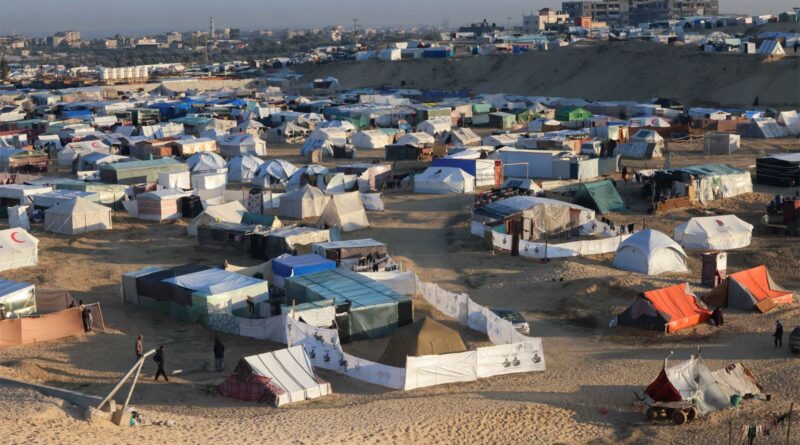Israel Intensifies Assault on Hamas’ Stronghold Gaza City
Israel’s intensifying military campaign in the Gaza Strip is cornering Hamas but, concurrently, it has resulted in increasing international isolation and societal division within Israel. The recent transition to a full ground assault signifies a new chapter in this conflict. Israel Defense Forces (IDF) have now turned their attention toward gaining control of Gaza City, the heart of Hamas’ stronghold.
Israeli troops have commenced the systematic destruction of Hamas’ infrastructure within the city. The local civilian population has been encouraged to vacate the potential conflict areas. Early military counts suggest a mass exodus of roughly 320,000 inhabitants, with an estimated 650,000 people yet to relocate. An increase in the frequency of airstrikes over recent days suggests possible preparation for a more extensive ground invasion.
Earlier military strategies mainly concentrated on the peripheral areas, comprising a methodical elimination of Hamas’ defensive posts. Gaza City is, in essence, the final significant pillar of resistance on the Strip. As Israel is estimated to have gained control of approximately three-quarters of this territory, the importance of Gaza City, both strategically and symbolically, as both the administrative and organizational core of the region, has grown.
Circumstances within Gaza City remain dramatically difficult. Large chunks of the city have been obliterated due to airstrikes and artillery bombardment, causing damage to schools, refugee dwellings, and other provisional shelters. Infrastructure loss has been catastrophic. As of April 2024, the monetary calculation of damages for the city is around $7.29 billion.
Structures critical for survival and welfare such as schools and hospitals lie in piles of rubble. Essential services such as water, electricity, and sanitation have gone from being scarce to virtually non-existent, leading to a humanitarian disaster of appalling scale. For Hamas, the struggle for retaining Gaza City bears existential overtones.
Left with scarce strategic reserves, the defence of the city for Hamas has become the last-ditch attempt to ensure their military and political survival. This has lead to anticipation of drawn-out battles characterized by attrition. Amid this escalating conflict, the internal political landscape in Israel is experiencing increased friction with growing opposition to the military action.
Street demonstrations against government policy have become a regular occurrence. The societal divide has broadened, with approximately two-thirds of the Israeli public voicing support for a proposal to negotiate an arrangement to secure the release of all prisoners, in exchange for a ceasefire and a complete withdrawal of Israeli military forces from Gaza.
The potential double-edged sword for Israel continues to loom – the possibility of high casualty figures due to urban warfare, coupled with a crisis of confidence in national leadership resulting from increasing political discord at home. The international dimensions of the crisis further amplify this precarious situation.
At the Arab and Muslim summit convened in Doha on September 15, world leaders expressed severe criticism. The official communiqué from the summit urged the international community to apply ‘all possible measures’ to end military operations and reevaluate relationships with Israel. This leaves Israel navigating a precarious situation as pressure mounts on multiple fronts.
The combination of regional stress from Arab and Muslim countries, transcontinental backlash from the European Union, and strained relationships with the United States has put Israel in a challenging position. Despite its relatively small physical size of just 140 square miles, the Gaza Strip has emerged as a pivotal point, drawing global attention and potentially influencing future Middle Eastern dynamics and beyond.
The results of the ongoing battle could substantially impact Israel’s internal stability. The ability or inability to retain control over Gaza has implications beyond the military, challenging the political legitimacy of the governing powers amid widespread protests and a deteriorating public trust. The international community, particularly the West, closely watches the progress in Gaza.
In the US, the primary agenda is to maintain the bond with its allies and contain Iran, while Europe seeks to position itself as a distinct power player, influenced by domestic politics and its strategic role in the developing world. The importance of Gaza surpasses its physical boundaries and morphs into a question of symbolic significance.
Among the Arab and Muslim world, Gaza is synonymous with resistance. The way the ongoing operation concludes will significantly influence the extent of anti-Israel sentiment in the Middle East, and shape Israel’s future relations with crucial nearby nations like Egypt, Jordan, and Gulf states.
To summarize, the Gaza Strip, despite its size, has become a crucial geopolitical fault line with the potential to agitate and reshape the entire Middle East and the wider global political equilibrium. In essence, Gaza’s future has implications that ripple beyond the region, influencing the global balance of power.

